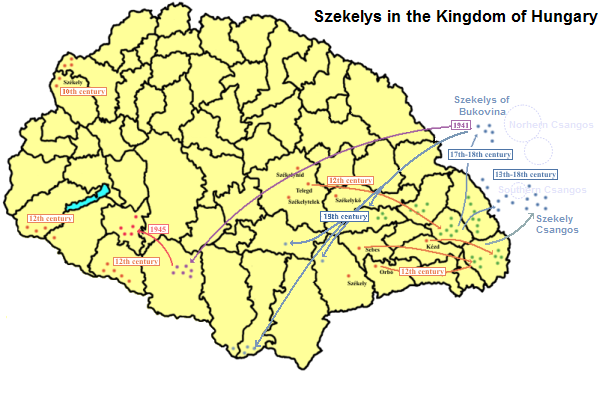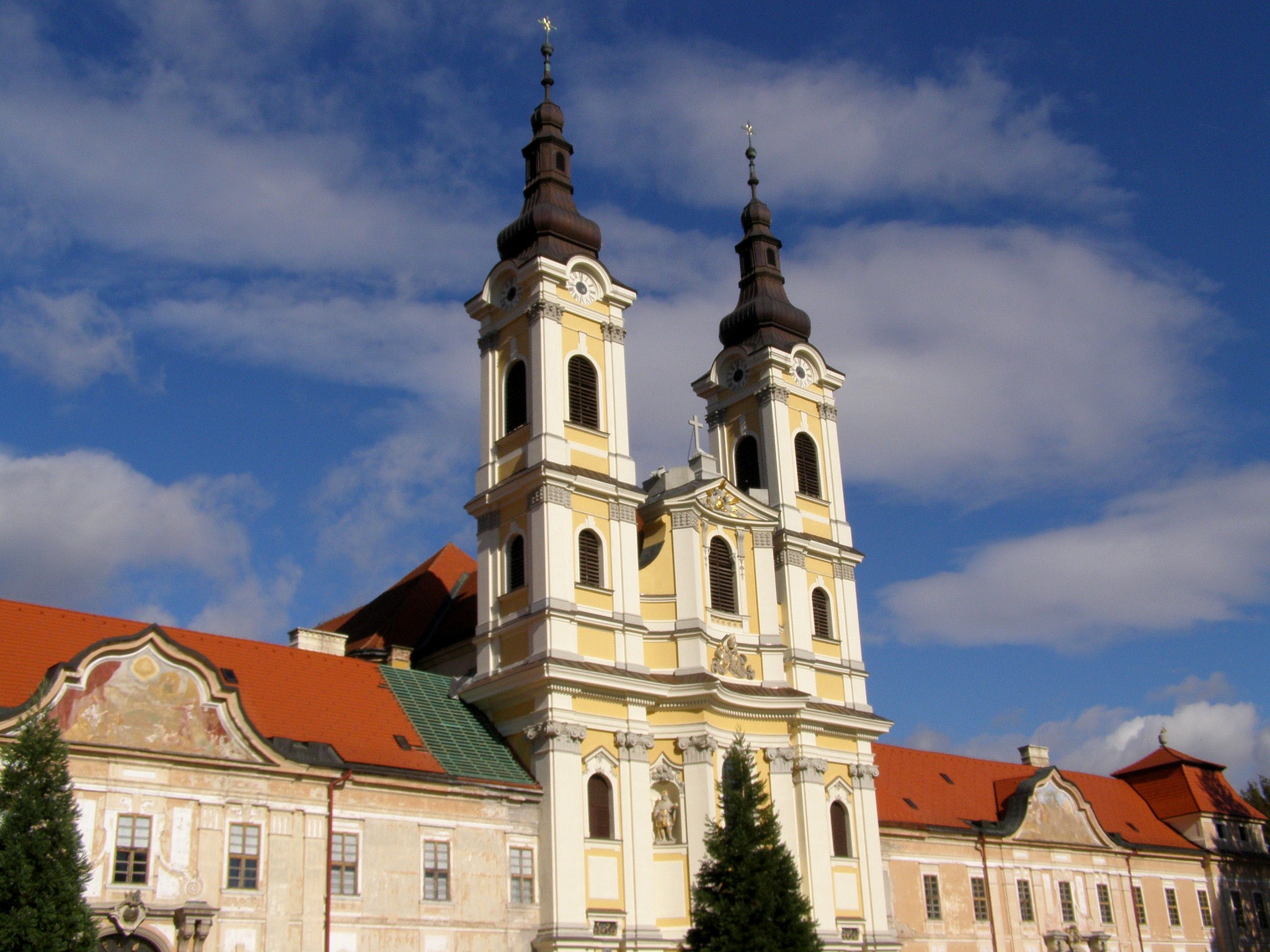|
Sântimbru, Harghita
Sântimbru ( hu, Csíkszentimre or colloquially ''Szentimre'', Hungarian pronunciation: , meaning "St. Emeric of Csík") is a commune in Harghita County, Romania. It lies in the Székely Land, an ethno-cultural region in eastern Transylvania. Component villages The commune is composed of two villages: History The villages forming the commune were part of the Székely Land region of the historical Transylvania province. Between 1762 and 1851, the village belonged to military district of the 3rd Company of the First Székely Infantry Regiment. They belonged to Csíkszék district until the administrative reform of Transylvania in 1876, when they fell within the Csík County in the Kingdom of Hungary. After the Treaty of Trianon of 1920, they became part of Romania Romania ( ; ro, România ) is a country located at the crossroads of Central Europe, Central, Eastern Europe, Eastern, and Southeast Europe, Southeastern Europe. It borders Bulgaria to the south, Ukraine to ... [...More Info...] [...Related Items...] OR: [Wikipedia] [Google] [Baidu] |
Harghita County
Harghita (, hu, Hargita megye, ) is a county ( județ) in the center of Romania, in eastern Transylvania, with the county seat at Miercurea Ciuc. Demographics 2002 census In 2002, Harghita County had a population of 326,222 and a population density of 52/km2. * Hungarians – 84.62% (or 276,038) * Romanians – 14.06% (or 45,870) * Romani – 1.18% (or 3,835) * Others – 0.14% 2011 census In 2011, it had a population of 302,432 and a population density of 46/km2. * Hungarians – 85.21% (or 257,707) * Romanians – 12.96% (or 39,196) * Romani * Others – 1.76% (or 5,326). Harghita county has the highest percentage of Hungarians in Romania, just ahead of Covasna county. The Hungarians form the majority of the population in most of the county's municipalities, with Romanians concentrated in the northern and eastern part of the county (particularly Toplița and Bălan), as well as in the enclave of Voșlăbeni. The Székelys of Harghita are mostly Roman Catholi ... [...More Info...] [...Related Items...] OR: [Wikipedia] [Google] [Baidu] |
Székelys
The Székelys (, Székely runes: 𐳥𐳋𐳓𐳉𐳗), also referred to as Szeklers,; ro, secui; german: Szekler; la, Siculi; sr, Секељи, Sekelji; sk, Sikuli are a Hungarian subgroup living mostly in the Székely Land in Romania. A significant population descending from the Székelys of Bukovina lives in Tolna and Baranya counties in Hungary and certain districts of Vojvodina, Serbia. In the Middle Ages, the Székelys played a role in the defense of the Kingdom of Hungary against the Ottomans in their posture as guards of the eastern border. With the Treaty of Trianon of 1920, Transylvania (including the Székely Land) became part of Romania, and the Székely population was a target of Romanianization efforts. In 1952, during the communist rule of Romania, the former counties with the highest concentration of Székely population – Mureș, Odorhei, Ciuc, and Trei Scaune – were legally designated as the Magyar Autonomous Region. It was superseded in ... [...More Info...] [...Related Items...] OR: [Wikipedia] [Google] [Baidu] |
Jászó
Jasov (german: Joß; hu, Jászó) is a small town and municipality in Košice-okolie District in the Kosice Region of eastern Slovakia. It is one of several towns in Bodva Valley. Other towns in Bodva Valley include: Lucia Bania, Medzev (Metzenseifen), Vyšný Medzev (Upper Metzenseifen), and Stos. History Historically, the village was first mentioned in 1234. St John The Baptist Church This is the biggest monastery complex in Slovakia and the St John The Baptist church, which forms its centrepiece, is considered one of the country's most important late-Baroque buildings. Though the present complex dates unquestionably from the 18th century, there has been a monastery here since 1170. The first, probably made of wood, was destroyed by the invading Tatars in 1242. A Romanesque stone monastery soon replaced it and was rebuilt in a fortified style in the 15th century. The site was then completely levelled again in the 18th century to make way for the present Baroque stru ... [...More Info...] [...Related Items...] OR: [Wikipedia] [Google] [Baidu] |
Switzerland
; rm, citad federala, links=no). Swiss law does not designate a ''capital'' as such, but the federal parliament and government are installed in Bern, while other federal institutions, such as the federal courts, are in other cities (Bellinzona, Lausanne, Lucerne, Neuchâtel, St. Gallen a.o.). , coordinates = , largest_city = Zurich , official_languages = , englishmotto = "One for all, all for one" , religion_year = 2022 , religion_ref = , religion = , demonym = , german: link=no, Schweizer/Schweizerin, french: link=no, Suisse/Suissesse, it, svizzero/svizzera or , rm, Svizzer/Svizra , government_type = Federal assembly-independent directorial republic , leader_title1 = Federal Council , leader_name1 = , leader_title2 = , leader_name2 = Viktor Rossi , legislature = Federal Assembly , upper_house = Counci ... [...More Info...] [...Related Items...] OR: [Wikipedia] [Google] [Baidu] |
Chêne-Bougeries
Chêne-Bougeries is a municipality in the Canton of Geneva, Switzerland. History Chêne-Bougeries is first mentioned in 1270 as ''Quercus''. In 1801 it was mentioned as ''Chêne-les-Bougeries''. Chêne-Bougeries was inhabited for most of its history, and neither the Romans nor the Genevans settled there. An important concern for the Genevans was the leprosy hospital that occupied part of the commune; it is only when this illness was defeated around the 16th century that Chêne-Bougeries really started to develop. During the French Revolution, the territory was occupied by the French. In 1798 the commune was forced to merge with the neighbouring communes of Chêne-Thônex and Chêne-Bourg to create a new entity, the Trois-Chêne. In 1801, however, it was able to regain the autonomous commune status, while Chêne-Thônex and Chêne-Bourg remained unified. In 1816, Chêne-Bougeries, as many of other neighboring communes, became part of a newly Swiss Geneva. Incidentally, Chên ... [...More Info...] [...Related Items...] OR: [Wikipedia] [Google] [Baidu] |
Hungary
Hungary ( hu, Magyarország ) is a landlocked country in Central Europe. Spanning of the Carpathian Basin, it is bordered by Slovakia to the north, Ukraine to the northeast, Romania to the east and southeast, Serbia to the south, Croatia and Slovenia to the southwest, and Austria to the west. Hungary has a population of nearly 9 million, mostly ethnic Hungarians and a significant Romani minority. Hungarian, the official language, is the world's most widely spoken Uralic language and among the few non- Indo-European languages widely spoken in Europe. Budapest is the country's capital and largest city; other major urban areas include Debrecen, Szeged, Miskolc, Pécs, and Győr. The territory of present-day Hungary has for centuries been a crossroads for various peoples, including Celts, Romans, Germanic tribes, Huns, West Slavs and the Avars. The foundation of the Hungarian state was established in the late 9th century AD with the conquest of the Carpat ... [...More Info...] [...Related Items...] OR: [Wikipedia] [Google] [Baidu] |
Balatonberény
Balatonberény is a village in Somogy county, Hungary, with a popular nudist beach. The country village had a population of 1,200 in 2011. The settlement is part of the Balatonboglár wine region. History General history A late Bronze Age cemetery has been found near the town. Many of inhabitants escaped to the reed-woods of Small Balaton (Kis-Balaton) close to the village and Lake Balaton when the Ottoman Empire conquered the village. By 1733 the Hunyady family had become the largest landlord in the area. Churches The town's first recorded church owned lands was noted in 1332. The Roman Catholic church was built around 1350 and it got seriously damaged during the Ottoman invasion. Castles The Star Castle (known locally as the Csillagvár) lies at the border with the settlement of Balatonszentgyörgy. The star-shaped, fortress-like building was constructed by László Festetics during the 1820s as a hunting lodge and an exhibition inside the building introduces the life o ... [...More Info...] [...Related Items...] OR: [Wikipedia] [Google] [Baidu] |
Mineral Water
Mineral water is water from a mineral spring that contains various minerals, such as salts and sulfur compounds. Mineral water may usually be still or sparkling (carbonated/effervescent) according to the presence or absence of added gases. Traditionally, mineral waters were used or consumed at their spring sources, often referred to as "taking the waters" or "taking the cure", at places such as spas, baths, or wells. The term ''spa'' was used for a place where the water was consumed and bathed in; ''bath'' where the water was used primarily for bathing, therapeutics, or recreation; and ''well'' where the water was to be consumed. Today, it is far more common for mineral water to be bottled at the source for distributed consumption. Travelling to the mineral water site for direct access to the water is now uncommon, and in many cases not possible because of exclusive commercial ownership rights. There are more than 4,000 brands of mineral water commercially available worldwide ... [...More Info...] [...Related Items...] OR: [Wikipedia] [Google] [Baidu] |
Winged Altar
A winged altarpiece (also ''folding altar'') or winged retable is a special form of altarpiece (reredos, occasionally retable), common in Northern and Central Europe, in which the central image, either a painting or relief sculpture (or some combination of the two) can be hidden by hinged wings. It is called a triptych if there are two wings, a pentaptych (but this is rarely used in English) if there are four, or a polyptych if there are four or more. The technical terms are derived from grc, τρίς: ''trís'' or "triple"; πέντε: ''pénte'' or "five"; πολύς: ''polýs'' or "many"; and πτυχή: ''ptychē'' or "fold, layer". There are often images on both the insides and outsides of the wings, enabling the altarpiece to display completely different views when open and closed. It was usually the custom to keep the wings closed except on Sundays or feast days, although very often the sacristan would open them for tourists at any time for a modest tip. Small win ... [...More Info...] [...Related Items...] OR: [Wikipedia] [Google] [Baidu] |
Baroque
The Baroque (, ; ) is a style of architecture, music, dance, painting, sculpture, poetry, and other arts that flourished in Europe from the early 17th century until the 1750s. In the territories of the Spanish and Portuguese empires including the Iberian Peninsula it continued, together with new styles, until the first decade of the 19th century. It followed Renaissance art and Mannerism and preceded the Rococo (in the past often referred to as "late Baroque") and Neoclassical styles. It was encouraged by the Catholic Church as a means to counter the simplicity and austerity of Protestant architecture, art, and music, though Lutheran Baroque art developed in parts of Europe as well. The Baroque style used contrast, movement, exuberant detail, deep colour, grandeur, and surprise to achieve a sense of awe. The style began at the start of the 17th century in Rome, then spread rapidly to France, northern Italy, Spain, and Portugal, then to Austria, southern Germany, and Rus ... [...More Info...] [...Related Items...] OR: [Wikipedia] [Google] [Baidu] |
Gothic Architecture
Gothic architecture (or pointed architecture) is an architectural style that was prevalent in Europe from the late 12th to the 16th century, during the High and Late Middle Ages, surviving into the 17th and 18th centuries in some areas. It evolved from Romanesque architecture and was succeeded by Renaissance architecture. It originated in the Île-de-France and Picardy regions of northern France. The style at the time was sometimes known as ''opus Francigenum'' (lit. French work); the term ''Gothic'' was first applied contemptuously during the later Renaissance, by those ambitious to revive the architecture of classical antiquity. The defining design element of Gothic architecture is the pointed or ogival arch. The use of the pointed arch in turn led to the development of the pointed rib vault and flying buttresses, combined with elaborate tracery and stained glass windows. At the Abbey of Saint-Denis, near Paris, the choir was reconstructed between 1140 and 114 ... [...More Info...] [...Related Items...] OR: [Wikipedia] [Google] [Baidu] |









.jpg)